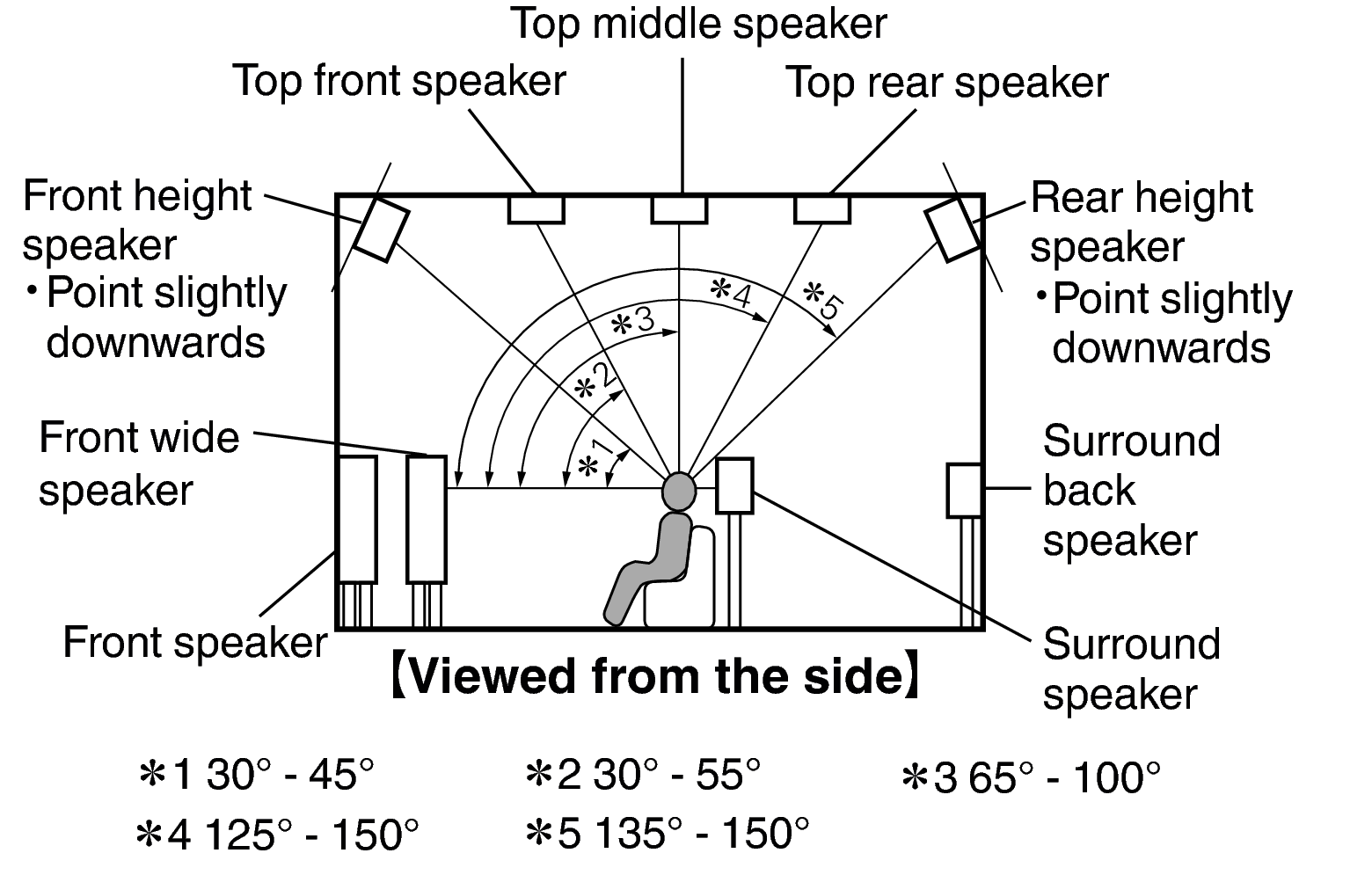Dolby 5.1.2 Speaker Placement
I would like to ditch my rears to try height speakers for atmos/Dolby surround/neural X in a 5.1.2 configuration, but I can’t find a way to experiment with speaker placement. Ceiling speakers are a no go, so I can only really place them in the following places. I am planning to upgrade my system to Atmos 5.1.2. Front and in-ceiling speakers are total fine in placement, the problem comes from my surround speakers. According to Dolby's recommended placement, surround speakers should be placed just behind the listening position and range from 90 to 110 degree (from the center line).

Up until the moment of this writing, DTS has not shared speaker layouts for its new DTS:X codec. However, it is object-based codec technology (similar to the description of Dolby Atmos), and we pointed out in our article, the name is incredibly close to “DTS Headphone:X” that is clearly based on a “classic 11.1” setup, as DTS’s own demonstrations have showed. Other projects in which DTS is involved, for example the native 3D Audio recordings with Hans Zimmer, have been done in 11.1 as well. Speaker layout: “Classic 11.2” used for Atmos Yamaha’s “Classic 11.2”, expands the basic 7.1 with clockwise (Figure 6): • Presence Left (Dolby and Audyssey call these “Front Height Left”) • Presence Right (“Front Height Right” in Dolby and Audyssey) • Rear Presence Right • Rear Presence Left • Subwoofer (Subwoofer L and Subwoofer R in the image, hence the.2) Figure 6: 'Classic 11.2'. Courtesy of Yamaha. If we want to use the “Classic 11.2” speaker layout for Atmos playback, we should mount the presence speakers at a certain height.
New punjabi song download dj remix. New Dj Remix Songs 2018. Bollywood Mp3 Songs 2019. Nikle Currant DJ Manik Remix.mp3 4.12 mb. Dilbar Dilbar Remix DJ Chirag Dubai.mp3. Tags: New Dj Remix Songs 2018 Download, DJ Songs 2018 Download, Bollywood DJ Remix Songs 2018, Hindi DJ Remix Songs PagalWorld 2018 Free Download, New Hindi DJ Remix Songs 2018 MirchiFun, Latest.
The vertical angles Dolby has specified for the in-ceiling speakers are useful for this. Only some basic mathematics is needed: the tangent of the vertical angle (like 30°, 45° or 55°) needs to be multiplied by the distance to the presence speaker on the floor plane (Figure 7): h = l*tan(θ) h = height of presence speaker l = distance to presence speaker on floor plane θ = (theta) vertical angle Figure 7: Height vs. Distance calculation. It’s important to select similar sounding speakers for ALL channels to guarantee the homogeneity of the system Sitting in a typical listening position means the average height of the listener’s ear is 3 feet (≈ 1 meter). At a distance of 9 feet, one can mount a presence speaker at a height of h = 9 * tan (30°) + 3 = 8 feet minimum to meet Dolby’s advice.
Dolby Atmos 5 1 2 Speaker Placement

If we want to calculate the height of the rear presence speakers, the formula is the same, but with a negative distance. Is the back wall at a distance of 9 feet, we calculate h = -9 * tan (150°) + 3 = 8 feet. Graphics 1 and 2 display the height of the presence speaker at any given distance. All this works for smaller rooms only, as for very large rooms the minimum height exceeds the height of the ceiling.
For example, an average American ceiling (assuming 8 feet high), at 30° the maximum distance from a presence speaker to the listening position would be d = (8-3) / tan (30°) = 9 feet. In the metric countries assuming a ceiling height of 3 meters d = 3 - 1 / tan (30°) = 3.5 meters. But even in larger rooms, presence speakers mounted at a slightly lower than 30° angle would still do the job, how many Home Cinemas do you know that respect the horizontal angles of 22° - 30° for the Fronts and 90° - 110° for the Surrounds (Figure 2) and still sound great? The next figures show all presence speaker heights for the minimum, optimum and maximum vertical angles (30°, 45°, 55°), for any distance from the listening position to the presence speaker on the floor plane up to 15 feet (Figure 8), or up to 5 meters (Figure 9). Figure 8: Front Height vs. Distance [feet].